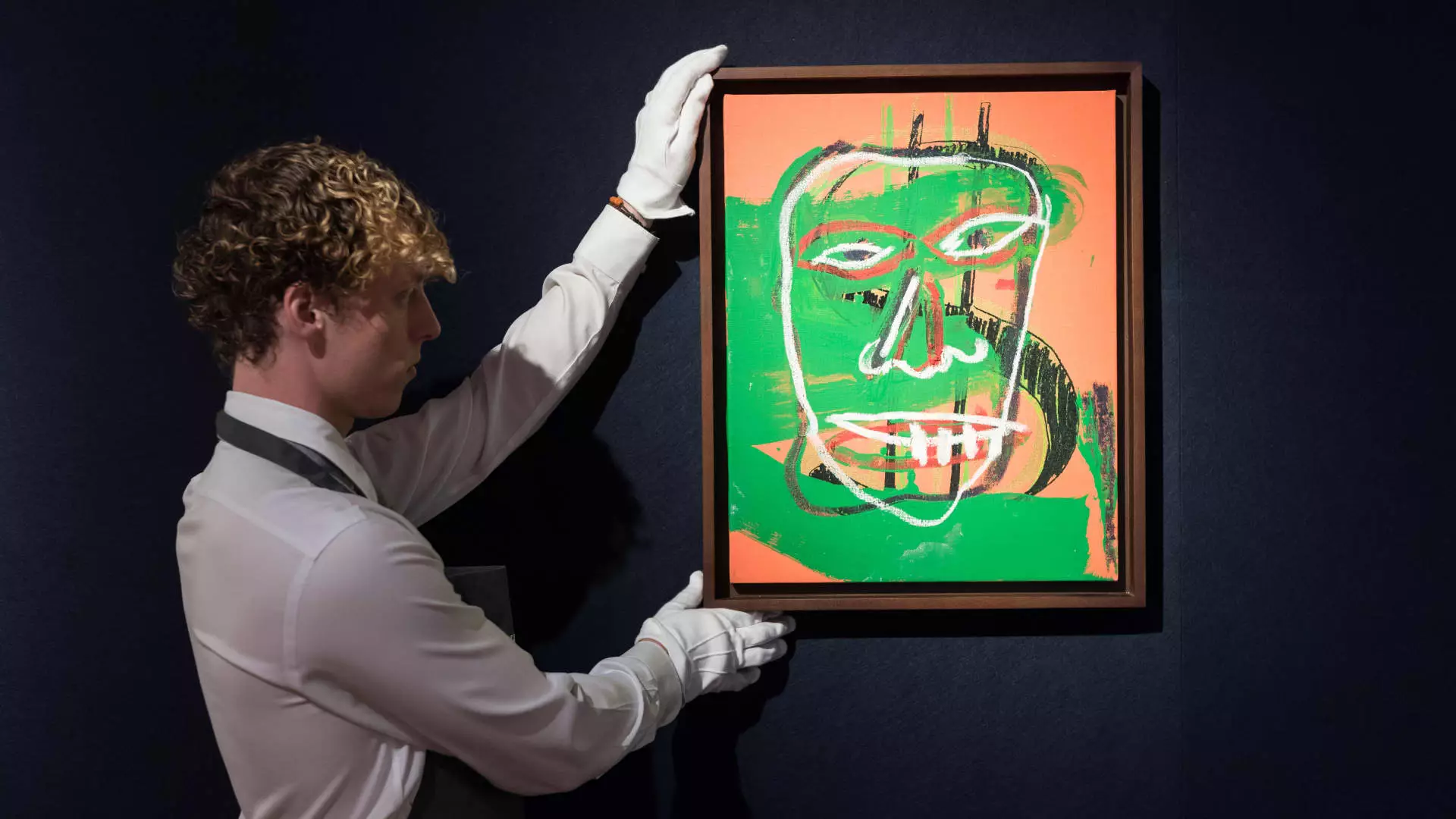The global art market faces pivotal changes, indicating a period of decline that many did not foresee. According to the latest report from The Art Basel and UBS Survey of Global Collecting, auction sales at prestigious houses like Christie’s and Sotheby’s have plummeted significantly—26% from the previous year and a staggering 36% from the peak in 2021. The erosion of demand for high-value artwork underscores a shift in buying patterns among affluent collectors, with less than half of surveyed high-net-worth individuals expressing intentions to augment their collections in the coming year. Rather, an increase in selling—now at 55%—suggests a cautious approach towards investment in art that may be indicative of broader economic anxieties.
The art market is not merely reflecting economic trends but is also an active player influenced by them. Wealthy collectors, traditionally the backbone of this market segment, are showing signs of restraint as they become more selective, echoing trends in other luxury categories. Paul Donovan, chief economist at UBS Global Wealth Management, notes a definitive shift towards more calculated purchasing decisions among the most affluent buyers, who are reconsidering their approach to art collecting.
Generational Shifts and Their Implications
A fascinating aspect of the current art market landscape is the generational shift influencing collectors’ behavior. The traditional market was once dominated by older generations, but now, younger demographics—primarily Gen X and millennials—are reshaping the purchasing dynamic. While this new segment of buyers is eager to enter the market, their preferences lean towards lower-priced, contemporary works rather than the towering masterpieces favored by their predecessors.
This generational divide has led to an oversupply of high-value Impressionist and Abstract works, creating a challenging environment for those holding on to these pieces. Rather than usher in a boom driven by high-end auctions, the current conditions could lead to a more pronounced emphasis on sales volume at lower price points. In essence, seasoned collectors appear to be streamlining their portfolios by offloading artwork that does not fit within their evolving strategies—which can further saturate the market with lower-value pieces.
Despite reports of declining sales figures, a paradox emerges from the sentiment expressed by high-net-worth collectors. An overwhelming majority—91%—express optimism regarding the future performance of the global art market. This optimism notably surpasses their outlook on traditional equity markets. Nevertheless, this optimistic outlook contrasts sharply with observable market realities, emphasizing a disconnect between sentiment and consumer behavior.
Interestingly, the median annual expenditure of affluent collectors on art remains stable at approximately $50,000. This suggests that while buying may be subdued, it is not entirely absent. Furthermore, high-net-worth individuals exhibit varying levels of engagement with the art market, further complicating predictions about market recovery. While the top-tier collectors seem to be slowing down, those in the lower tiers maintain steady purchasing habits, indicating a potential restructuring of market engagement.
Amid these shifts, external factors are intricately intertwined with market fortunes. Geopolitical concerns, particularly in regions like the Middle East and Eastern Europe, paired with economic hesitations in larger markets such as China, have triggered lower buyer confidence. The rise in interest rates also poses significant hurdles for art acquisitions, as prospective buyers find safer, more lucrative investments elsewhere, which can dampen enthusiasm for high-ticket art purchases.
Despite these barriers, over three-quarters of successful collectors have engaged in purchasing art both in 2023 and the first half of 2024. This duality reflects a complex behavioral landscape shaped by both individual preferences and broader economic realities. Collectors seem to be increasingly wary of the ethical and logistical challenges inherent in the modern art market, particularly as they relate to ownership, forgeries, and legal ramifications.
As the art world braces for a possible transfer of wealth and art between generations, critical concerns have arisen about the future of inherited collections. A concerning 52% of collectors express anxiety over the effectiveness of artworks freely moving across borders, alongside worries about legal implications tied to art ownership. While many inherited collections are expected to be sold, the realities point to a complex interplay between legacy, familial connections, and evolving taste preferences.
The following years could present opportunities and challenges for both the market and collectors alike. As wealth transfers from older to younger generations, the art market may discover a refinanced interest in art collecting that has enough variability to influence pricing and inventory strategies significantly. Whether this culminates in a boon or a bust for new collectors remains to be seen, but the anticipation surrounding such transitions signals an evolving narrative that mirrors broader societal changes.
The art market’s current trajectory may reveal signs of a broader recalibration, influenced by demographic shifts, economic conditions, and changing collector sentiment. The interplay between buyer behaviors and external influences will be crucial in shaping the future landscape of an industry poised for transformation.

